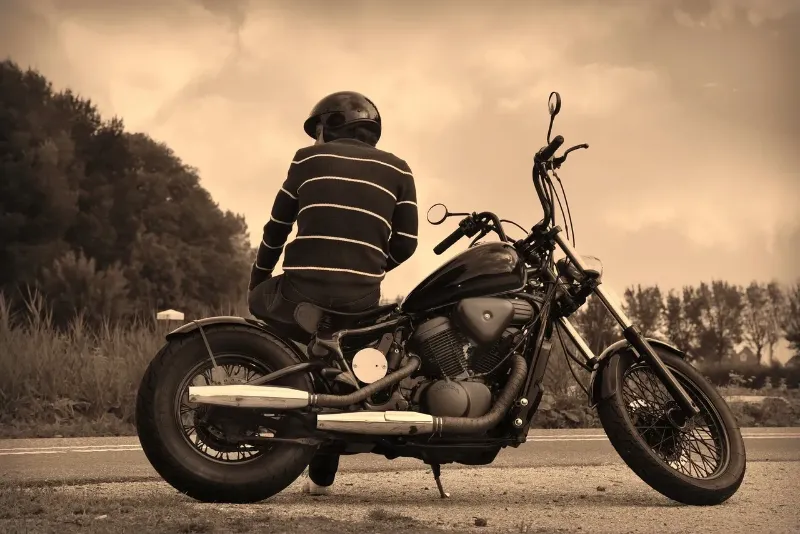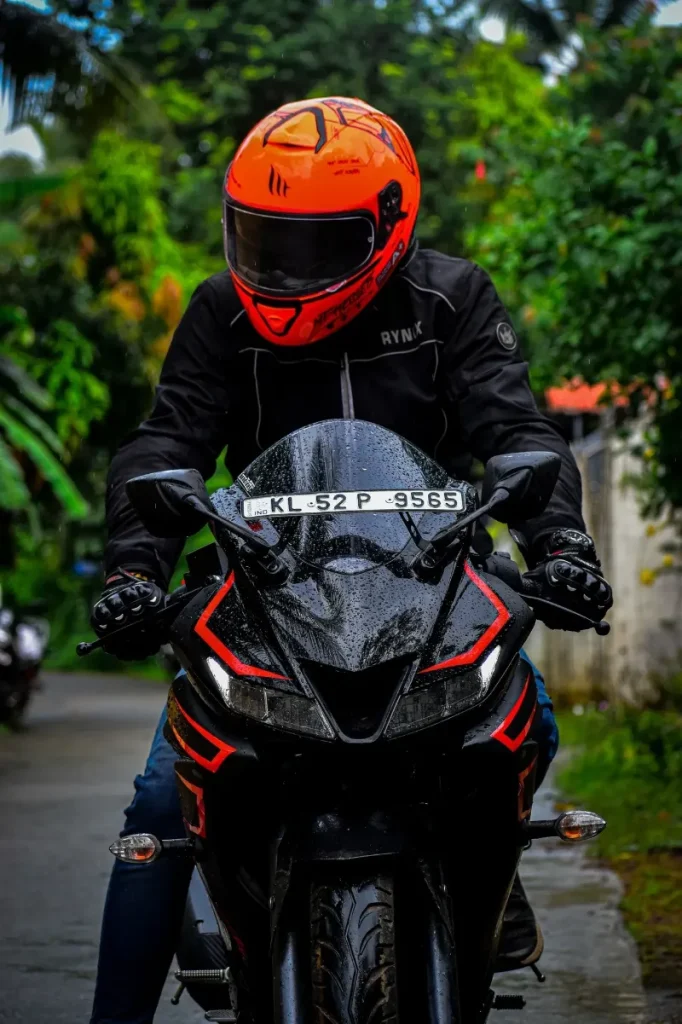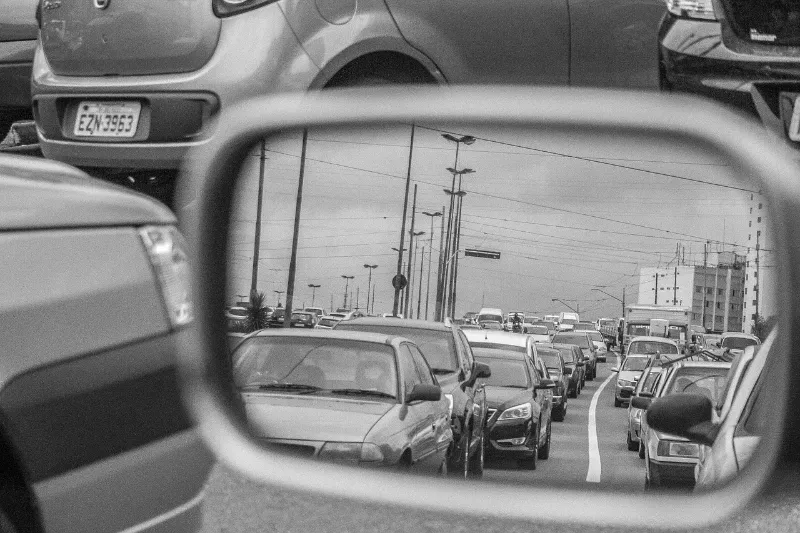It would be safe to say that all riders are drivers, but not all drivers are riders! If you are a motorcycle rider, you know that even though the person who sits behind the wheel of a car is called a driver, the person who sits behind the handlebars of a motorcycle is called a rider. Riders have a significant advantage, over drivers, when it comes to awareness of other riders. If you have never ridden a motorcycle, you are less likely to keep your eye open for motorcycle riders, but that is no excuse for not intentionally looking for riders. As drivers, we have the responsibility to make the road safe for all fellow road travelers, not just the ones on four wheels!
1. Benefits of motorcycles

Motorcycles benefit the riders, our environment, and drivers, as well.
For a rider, according to the article, “6 Surprising Benefits of Motorcycle Riding”, riding leads to:
- healthier, stronger knees and thighs
- improved core strength
- increased insulin sensitivity
- increased calorie burning
- improved neck strength
- better mental outlook
Also, for the rider, motorcycles have financial benefits. Motorcycles tend to be less expensive than cars and require less gas and maintenance and when maintenance is necessary, it is less expensive than maintenance for a car. For our environment, motorcycles produce less exhaust (if well maintained), helping to minimize smog and emissions. Finally, for drivers, motorcycles free up more road space. Riders can ride in the HOV lane, leaving more room in the regular lanes for cars. Riders are also trained to be more alert, of all road situations, making the road safer all around.
2. Dangers of Motorcycles

The two main factors that make a motorcycle dangerous are decreased crashworthiness and decreased visibility. Automobile makers spend massive amounts of money in research and application, attempting to give their vehicles the best crash-worthy ratings. The focus is on things like seatbelts, crumple zones, airbags, etc. These are levels of protection added to a vehicle, to make it a safer ride for the occupants. As you can see, a motorcycle has none of these added levels of protection. There are no driver or occupant protections provided to the rider or the passenger. Also, a motorcycle weighs significantly less than most other vehicles on the highways and roadways. The brunt of the force of the impact between a motorcycle and vehicle will be born by the motorcycle.
Decreased visibility of a motorcycle can be a real danger zone. This becomes a significant concern when considering a vehicle’s blind spots, where the driver cannot directly see. Larger vehicles have larger blind spots, like tractor trailers, increasing the size of the potential danger zone for the rider. Some common blind spots are (1) the space between what you see when you are looking ahead and what you see when you are looking in your rearview mirror, (2) the area that is obscured by your vehicle’s bodywork, when you are looking in the side mirrors, and (3) blind spots potentially caused by window pillars and headrests.
One other danger factor that riders have to deal with, much more than drivers, is road debris. When drivers lose their load, be it an 18-wheeler carrying a commercial load or an individual carrying a mattress, this could be a death sentence for a rider and/or their passenger, due to the non-existent external protection from the motorcycle. An almost invisible, sometimes deadly danger for riders comes from lost vehicle fluids, be it from oil leaks or broken brake lines, or any other numerous fluids that could come from a vehicle. Riders cannot always see these fluids and riding into them could cause great harm to the rider and their bike.
3. Motorcycle Crash Statistics

In the article, “Facts + Statistics: Motorcycle crashes” (https://www.iii.org/fact-statistic/facts-statistics-motorcycle-crashes), the following statistics are noted:
- In 2017, motorcyclists were 27 times more likely than passenger car occupants to die in a crash, per vehicle mile traveled.
- Helmets saved the lives of 1,872 riders in 2017.
- Estimated effectiveness in helmets preventing fatalities: Riders – 37%; Passengers – 41%.
- From 2008-2017, annual motorcycle fatalities, in the US, ranged from a low of 4,469 to a high of 5,337.
- From 2008-2017, annual motorcycle injuries, in the US, ranged from a low of 81,000 to a high of 104,000.
4. How motorcyclists can make their ride safer?

To combat decreased crashworthiness and decreased visibility, the rider must wear protective gear, not only a helmet but also clothes that fully cover their skin. Some riders also wear “leathers”, not only because they look rugged, but because they offer an extra layer of protection. In effect, this makes the rider more “crashworthy”, to make up for the bike’s fewer protective features. To make the bike more visible, the rider can add reflective tape to the forks and even the wheels. They can also add extra lighting, like LED lights, to the body of the bike, to make it more visible. Brake lights can also be modified to flash, when the brake is engaged, giving the drivers behind, additional notice that the rider is slowing or stopping. States have different laws regarding flashing brake lights and LED lights, so the rider will want to make sure they follow the state laws when making these modifications. Another option for increasing visibility is bright gear and clothing for the rider. Neon orange and yellow safety vests, like construction workers wear, make the rider more visible to the drivers. Also, when riding, the rider needs to focus on staying away from any potential blind spots, especially with tractor-trailers, to maintain visibility for other drivers on the road.
5. How drivers can make the ride safer for motorcyclists?

The most important things a driver can do, to make the road safer for a rider, are to be alert and be aware. As with any time you are driving, do not have distractions; no texting and driving; no drunk driving; and no drowsy driving. Every time you get into your vehicle, fix your rearview mirror so that the back window is completely visible. Adjust your side view mirrors to best compensate for your vehicle’s blind spot. Make sure to look over your shoulder, as you change lanes or join traffic. Use your blinker to let bikers know what you are planning to do next. When driving behind a rider, follow the 4-second rule; allow for at least a 4-second cushion between your car and the motorcycle. If there is a passenger in the vehicle, ask them to help you look for riders. If you park on a busy street, make sure to check before you open your door, so that a rider does not crash into the door and flip over it.
Road safety is a responsibility that all drivers and riders, alike, bear. “Share the road” is a common theme with bikers and bicyclists. Drivers need to be on high alert for travelers using alternate forms of transportation. Motorcycles offer many advantages, not only to riders but also to our environment and other drivers on the road. We all need to be alert, be safe, and be aware!
Stay Safe!

